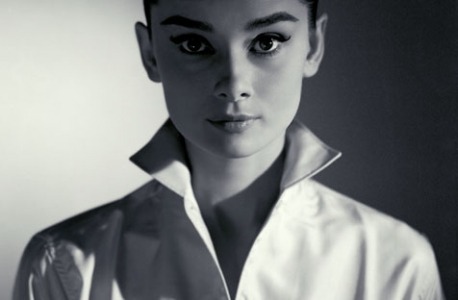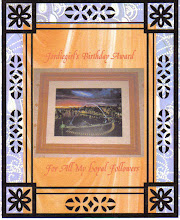For lovely eyes, seek out the good in people.
For a slim figure, share your food with the hungry.
For beautiful hair, let a child run his fingers through it once a day.
For poise, walk with the knowledge you’ll never walk alone.
— Audrey Hepburn











The idea for the Vampira character was born in 1953 when Nurmi attended a Masquerade in a costume inspired by a character in The New Yorker cartoons of Charles Addams. Her appearance with pale white skin and tight black dress caught the attention of television producer Hunt Stromberg, Jr. who wanted to hire her to host horror movies on the Los Angeles television station KABC-TV, but Stromberg had no idea how to contact her. He finally got her phone number from Rudi Gernreich, later famed as the designer of the topless swimsuit. The name Vampira was the invention of Nurmi's husband, Dean Riesner.
On April 30, 1954, KABC-TV aired a preview, Dig Me Later, Vampira, at 11:00 p.m. The Vampira Show premiered on the following night, May 1, 1954. For the first four weeks, the show aired at midnight, moving to 11:00 p.m. on May 29. Ten months later, the series aired at 10:30 p.m., beginning March 5, 1955.
Each show opened with Vampira gliding down a dark corridor flooded with dry-ice fog. At the end of her trance-like walk, the camera zoomed in on her face as she let out a piercing scream.
She would then introduce (and mock) that evening's film while reclining barefoot on a skull-encrusted Victorian couch. Her horror-related comedy antics included ghoulish puns such as encouraging viewers to write for epitaphs instead of autographs and talking to her pet spider Rollo. In another publicity stunt, she would cruise around Hollywood in the back of a chauffeur-driven 1932 Packard touring car with the top down, where she sat, as Vampira, holding a black parasol.
Later in life, Nurmi, who was divorced and had no children, began creating Vampira drawings and selling them on the Internet. She remained proud and protective of the character she created.
"I don't have any babies or any social history that's remarkable, so I'm leaving something behind, you know, when the time comes to say goodbye, I'm leaving something," she said in an interview with KABC's Eyewitness News.
Nurmi passed away on January 10, 2008 of natural causes in her Hollywood, California home...



 Happy Audrey Friday! So...I just found out (where have I been hiding??!!) while reading the LA Times that LACMA (Los Angeles Contemporary Museum of Art) will be hosting an Audrey Hepburn marathon entitled "Audrey Hepburn: Then, Now and Forever." It will run until November 13 and features some Hepburn films rarely shown on the big screen, along with special guest speakers. I'm so excited! ::smiling from ear to ear:: so if you live in the Los Angeles area, and you're an Audrey Hepburn fan, or are curious to learn more about this wonderful, beautiful, classic lovely lady who once graced us, be sure to attend these fabulous screenings!
Happy Audrey Friday! So...I just found out (where have I been hiding??!!) while reading the LA Times that LACMA (Los Angeles Contemporary Museum of Art) will be hosting an Audrey Hepburn marathon entitled "Audrey Hepburn: Then, Now and Forever." It will run until November 13 and features some Hepburn films rarely shown on the big screen, along with special guest speakers. I'm so excited! ::smiling from ear to ear:: so if you live in the Los Angeles area, and you're an Audrey Hepburn fan, or are curious to learn more about this wonderful, beautiful, classic lovely lady who once graced us, be sure to attend these fabulous screenings!


The daughter of an aspiring actress, Marie De Carlo, and a salesman, William Middleton, De Carlo was born Peggy Yvonne Middleton in Point Gray, British Columbia, on September 1, 1922. Her father abandoned the family in 1925 when De Carlo was only 3. Afterward, DeCarlo's mother worked as a waitress to support the family. Nonetheless, she took great interest in her daughter's budding talents as a dancer. In the late 1930's, DeCarlo and her mother made their way to Hollywood. Soon, DeCarlo found work as a chorus girl, and began making the rounds at casting calls, trying to get into the movies.
By the time she celebrated her 19th birthday, she had begun landing small film roles, first at Columbia Studios and then Paramount. She appeared in about 20 films between 1941 and 1944, but only in small roles and bit parts. DeCarlo had to wait four years for her breakthrough role in the 1945 Universal Studios Technicolor film Salome, Where She Danced.
Her starring role in the 1948 western Black Bart helped De Carlo bridge the gap between costume dramas and the western genre.DeCarlo's success in Black Bart helped change her image, so much so that she soon became typecast in westerns and throughout the 1950s, she made scores of westerns.
1956 defined a turning point in De Carlo’s career when she was cast in Cecil B. DeMille’s landmark production of The Ten Commandments. DeCarlo’s performance as Moses’ wife Sephora, opposite Hollywood icons Charlton Heston and Yul Brynner, marked a place for her in films. Her next project paired her with Clark Gable and Sidney Poitier in the flat costume epic Band of Angels (1957).
In the early 1960s, De Carlo starred in a string of B-features, which inspired little interest in audiences. With the demise of her film career, the struggling actress made a transition to the small screen.
In 1964, she was chosen to play the ghoulish mom in a pilot for CBS. Her portrayal of Lily Munster in the horror-spoof sitcom The Munsters (1964-66) marked her television debut, and introduced her to a whole new generation of audiences.
De Carlo was married to Hollywood stuntman, Robert Morgan. The couple had two sons, Bruce and Michael, before they divorced in the mid-1970s. De Carlo died of heart failure on January 8, 2007 at age 84 in Woodland Hills, California...











































